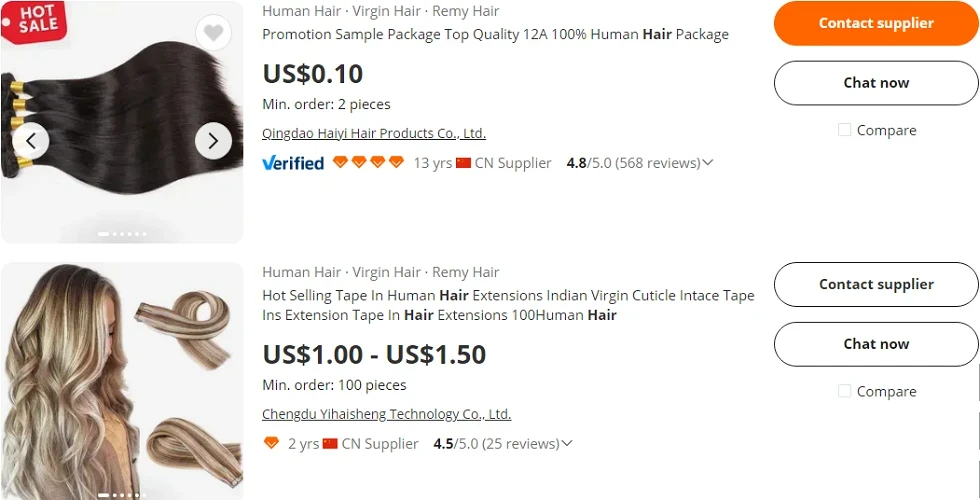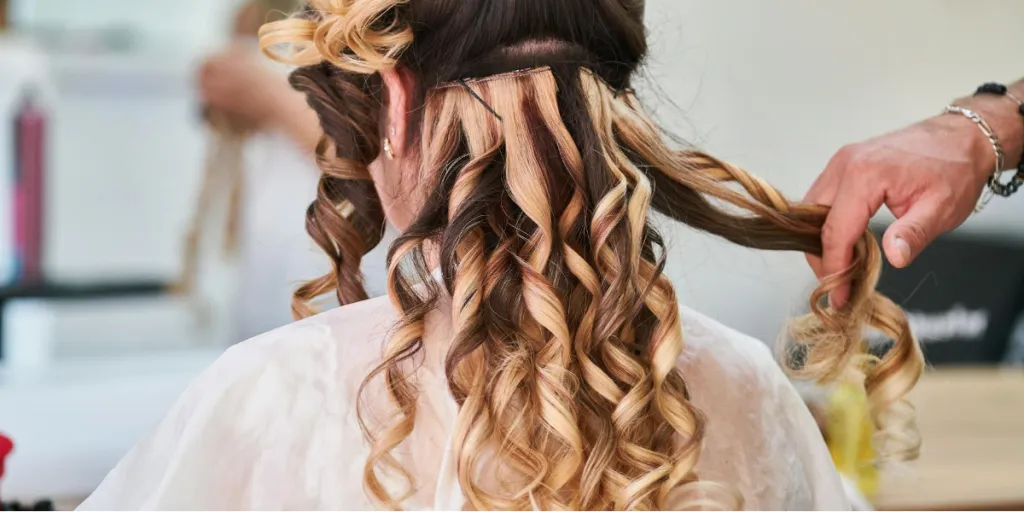It’s the perfect time to start an online hair store and be your own boss because the hair extension business is booming.
As the global population ages and hair disorders such as alopecia, breakage, and inflammation increase, the market for hair extensions is expected to grow at an annual rate of 8.58% to reach US$ 7.90 billion in 2030.
In this blog, we’ll discuss six tips to run a profitable online hair store and tap into this market.
Table of Contents
6 tips to run a profitable online hair store
The bottom line
6 tips to run a profitable online hair store
Starting an online hair store is great if you are passionate about hair extensions and making people feel and look great.
Plus, you get to cut overhead costs on rent, electricity bills, and managerial staff and instead focus on market activities to facilitate business expansion. As well as being easier to operate, many online stores also offer tools that encourage efficiency in management. However, you’ll still need a strategy.
Here’s how to get started.
1. Develop a business strategy for your online hair business store
Many aspects of running an online hair business include market research, audience identification, product selection, pricing, marketing, and sales strategies.
Consider the following questions when creating a business strategy for your online hair store:
- Where will your online hair store be in the next 5, 10, or 15 years?
- What are strategies you can use to grow your hair extensions business rapidly?
- What kind of hair extensions would you offer?? Is it wigs, sew-in extensions, closures, or clip-ins? A combination of all?
Research the market after identifying what type of hair extension store you’ll operate. This will help you understand trends and improve your strategy.
Also, research your major competitors to know how to replicate their success and take advantage of their weak points when offering products and services. Find out their pricing, their target market, and strengths and weaknesses.
Then, segment your target audience to make your marketing campaigns more effective.
For instance, teenagers respond to different ads than Baby Boomers. Hence, it’ll be counter-effective to create one ad for both segments. Social media platforms like Instagram and TikTok are ideal for targeting Gen Zs and Millennials, while Facebook is best for Gen X and Baby Boomers.
2. Choose the right location for your eCommerce store
It’s time to determine the best location to start your online hair store.
First, you might build a website and manage its operations or sell on Amazon and Shopify. Selling on Facebook marketplace or via Instagram shoppable posts is another possibility.
Building your own hair extensions site might give you total control over the business, but you’ll need more resources to attract customers. You can make your own return policies and web designs, which puts you in control of your business.
Managing your eCommerce site might not be a cakewalk, but you could succeed if you’re dedicated enough and offer something unique.
Sarah Mckenna, founder of Vixen and Blush, runs her online hair store off a tailored website. She grew her hair extension business from nothing by traveling to other countries to find quality hair at affordable prices.

While you can follow Sarah’s footsteps, building a site will cost you some money to develop and maintain. But if that isn’t your cup of tea, consider selling on eCommerce platforms, and you won’t have to invest as much to attract shoppers.
These platforms will attract more traffic than independent sites thanks to their product listing optimization and sponsored ads.
Product listing optimization aims to benefit your customers by increasing the visibility of your products using relevant keywords in titles, descriptions, images, and videos.
However, there are downsides. There might be competition from other hair extension sellers. That’s why you need a dedicated marketing budget to compete effectively.
You should also consider your preferred platform’s policy requirements, listing fees, and limited design options. Why? Your storefront needs to be attractive to visitors. And you need to be able to remain in profit, always. If it’s too restricting for your business model, it becomes counter-effective.
For example, Amazon, the world’s largest marketplace, has a vibrant business community, but its policies and fees can be a hurdle for some upcoming hair sellers.
There’s more flexibility when using social media platforms, but you need experience to stand out. Social media has evolved from a way to connect with family and friends to a way to make purchases. A recent Hubspot Consumer Trend Report found that 28 percent of Gen Z and Millennials have used social media to make purchases.
Unfortunately, only a few social media sites, like Facebook, Instagram, and Pinterest, allow buyers to check out directly from the app. Unless you do it garage-sale style, others require you to link to a verified online store to operate.
3. Choose your hair store’s business model
Business models enable your online hair store to operate profitably and provide value to customers. With it, you can develop marketing strategies to target your customer base and tailor content that resonates with them.
This helps you build a sustainable hair business that’s foolproof to fluctuating market conditions. Below are proven hair business models you should consider:
- Drop shipping: It’s a terrific option to save money and not hold and manage inventory. You can use third-party suppliers on Alibaba.com who will store and ship your extensions for a fee.
However, one downside is the competition. It’s easy to start, so many small businesses do it.
For example, an entrepreneur, Beautybyneyadior, sells hair extensions and dropships on TikTok:
In addition, the influencer offered to teach people how to start dropshipping, which will introduce more entrepreneurs into the market.
- Private labeling: This is an excellent option for hair extension sellers with a unique idea or variation of an existing one, and they know there’s a market for it.
Running a private label model means you can control how manufacturers produce, package, and label your hair extensions. This model also allows you to sell the finished product under your brand name, giving you some control over pricing.
Remember, private labeling is a long process, and trusting external parties leaves you open to some challenges you can’t control.
- White labeling: You can order white-label products— where a manufacturer creates and supplies hair extensions to sell under your brand name. But they’re generic products, and you have little control over the production process.
- Wholesale: Buying wholesale products is a good alternative if you want to sell a variety of hair extensions from different brands. It provides more opportunities because there are many products available for wholesale.
It also has a lower risk because you’re dealing with established and reliable brands buyers are familiar with.
But, since you buy from an established wholesaler, they also supply hair extensions to other beauty supply shops, meaning you must do extra to stand out.
Though you can rely on any of these business models as a launch pad, continue to innovate how you provide value to clients. It’ll have a significant impact on your business moving forward.
4. Vet hair extension suppliers
Once you’ve chosen a business model, it’s time to search and vet specific hair extension suppliers.
Search for suppliers on Google or use hashtags related to hair extensions to find them on Instagram. Read comments and reviews to know what people think of their products and services, and bookmark your picks.
Additionally, search for hair extensions on Alibaba.com’s search bar and click “Contact supplier/manufacturer” beside specific products on the search engine result page.

Wherever you find these suppliers, ask them questions like:
- Do they produce the hair extensions themselves?
- What’s their cost per unit?
- How long does it take to ship?
- What’s their minimum order quantity?
Trust your gut. If you see red flags like sloppy websites, non-responsive vendors, or suppliers making promises that seem too good to be true, move on.
Lastly, read their fine print. What are their sales conditions? Do they guarantee anything about the hair extensions supply? Their sites should also have return policies and shipping times. Contact others if you’re unsatisfied with the suppliers’ terms and conditions.
5. Selecting the products for your hair store
Once you’ve gotten to know your potential suppliers, ask for samples to understand the quality of the hair extensions.
It’s common sense to verify the quality before ordering in bulk. You want to avoid being hasty with this only to find out the hair extensions aren’t up to snuff.
Ask the supplier to send samples like sew-in and clip-in extensions in straight and wavy hairs. Install the hair on yourself or a friend or colleague.
Dye, lighten, dry, and interact with the hair extensions to see how well it’s holding up. Whether it’s human hair or synthetic, check the thickness, texture, and health. Plus, ensure it doesn’t damage your hair and blends seamlessly with it.
Start with a small order to ensure it isn’t a bait and switch. It’s better to be safe than sorry if the hair extensions you receive are inferior to the sample.
Before placing a larger order, ask your customers which ones they prefer.
Moving forward, you’ll be more at ease when dealing with your suppliers because you’re sure they can meet your customers’ needs.
6. Promote your online hair store
Marketing your hair extensions provides a large pool of potential customers, giving you more opportunities for sales and growth.
For a wider reach, market your hair store using Local SEO and content marketing, social media marketing, and email marketing. Each of these mediums has its strengths and weaknesses.
For instance, Local SEO and content marketing put you on the map, allowing nearby customers to locate your online store and reach out to you effortlessly. Content marketing positions your brand as an authority by providing in-depth information about your brand and products for search engine users.
If you have a tight content marketing or SEO budget, consider collating user-generated content (UGC) or feature micro-influencers in the hair industry.
Then, repurpose the curated content on your site, eCommerce platforms, and YouTube channel, and interlink all of them. This will improve social signals (which helps SEO) and encourage influencers to promote your hair extensions on their platforms.
This influencer, Sarah Lee, reviewed a hair extension by Pretty Little Thing, a fashion company, on YouTube with a link to the product and tagged its makers.

You may even partner with a hairstylist to make product tutorials in exchange for a discount on hair extensions. Use this opportunity to share styling tips and showcase your hair quality.
You can also drive traffic to your products with social media marketing. As discussed earlier, focus on relevant platforms.
Instagram is great for showcasing your portfolio, but Facebook allows you to engage with clients and build a community. Respond promptly to comments and direct messages and hold contests and giveaways to generate buzz.
Taryn and Logan, co-founders of Sitting Pretty Halo Hair, a hair extension business, did a giveaway to boost its online presence:

Their tactic was simple: get their followers to tag their friends to any post on their profile for a chance to win. It might seem roundabout, but it’s an easy and common way to drive traffic to your website or social media page.
On the other hand, email marketing gives you a platform to nurture or build relationships with new or existing customers personally. This is a superb strategy to encourage loyalty and advocacy from your buyers.
To create an email marketing campaign, start by building an email list. Using a pop-up on your hair extensions site to offer visitors discounts or free shipping will encourage them to sign up.
If you run your business on social media, add and promote your sign-up button on your page. Offer free, valuable content as a trade-off for their email addresses.
The next step is to create content explaining the value of your hair extensions. For example, send newsletters regarding thinning hair or bald spots and include your products as a solution.
Lastly, send cart abandonment emails to remind them they still have items in their cart. It shows you care about their business and sweeten the deal by offering coupons.
The bottom line
Your hair business’ success depends on the satisfaction of your customers and the ability to adapt. Keep up with changing customer preferences and market trends to stay relevant.
Use the tips discussed in this article to run a successful online hair business.




